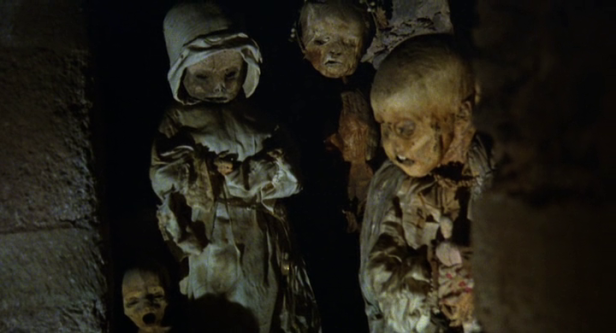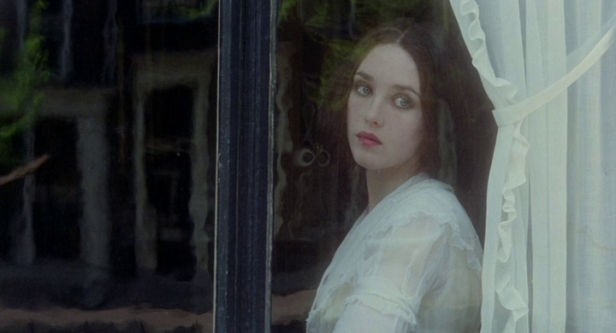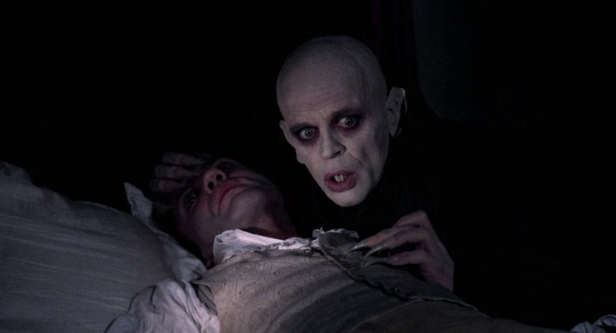Original title: Nosferatu: Phantom der Nacht
1979 turned out to be quite the year for vampire cinema. Over the course of 12 months they seemed to be everywhere. John Badham’s Dracula, with Frank Langella in the title role, was the big-ticket attraction, but there was also Stan Dragoti’s unfunny spoof Love at First Bite with George Hamilton playing the count, and a handful of cheaper and less visible items like Nocturna (1979) and Dracula Blows His Cool (1979). American television got in on the act with the failed pilot Vampire and the mini-series Salem’s Lot, adapted from the novel by Stephen King. Pick of the crop though was Werner Herzog’s Nosferatu the Vampyre, a remake of the 1922 classic by F.W. Murnau.
Herzog held Murnau’s film to be the best evert made in Germany and was keen to try his hand at the same story – although he restored the original names from Bram Stoker’s 1897 novel (Murnau had changed them in a failed attempt to head off any copyright issues), Murnau follows the beats and look of the silent film. And the result is remarkable, a flawed but never less than mesmerising feast for the sense – and not just for Jörg Schmidt-Reitwein’s gorgeous photography but for the marvellous soundtrack from genre-defying German musical collective Popol Vuh, returning to Herzog after they’d worked together on Aguirre, der Zorn Gottes/Aguire, the Wrath of God (1972) (they’d reunite in 1982 for Fitzcarraldo).

The two collide head on in the dread-laden opening scene. Herzog’s camera (he shot the handheld footage himself) roams around the famous Mummies of Guanajuato in Mexico accompanied by the opening of Popol Vuh’s haunting Brüder des Schattens – Söhne des Lichts, the title tracks from their tenth album, released just the year before. The main plot begins in Wismar in Germany. Murnau’s film had filmed on location in the town in the northwest of Germany, but Herzog’s plans to release a swarm of rats gave the town officials pause for thought and Herzog and his cast and tiny crew were forced to decamp to Delft in the Netherlands. When officials there baulked at the idea of the director setting 11,000 rats loose on the town forcing Herzog to move to the more accommodating Schiedam nearby instead.
In Wismar, estate agent Jonathan Harker (Bruno Ganz) is assigned a new task by his employer, Renfield (Roland Topor) – he’s to visit Count Dracula in his Transylvanian castle to finalise the purchase of a property in Wismar. Leaving behind his wife Lucy (Isabelle Adjani), Harker ignores the warnings of superstitious locals, arrives at Dracula’s castle which, in a never explained but eerie touch, appears to be dilapidated from a distance but in pristine condition when Harker arrives. The Count (Klaus Kinski) cuts a strange figure and has a creepy interest in a photograph of Lucy that Harker has brought with him. As Harker is afflicted with strange nightmares during his stay at the castle, so Lucy is haunted by terrible dreams of her own and Renfield is driven insane, committed to a psychiatric hospital after trying to bite a cow.

After confirming his suspicions that Dracula is a vampire, Harker escapes and makes his way back to Wismar, unaware that Dracula is close behind. The vampire arrives aboard a ship whose crew he’s massacred, the town soon overrun by the aforementioned plague of rats. A strangely ineffectual Abraham van Helsing (Walter Ladengast) determines to kill Dracula and save Lucy but the scourge of the vampire continues even after Dracula’s death. Herzog radically rethinks the ending of the film. For the more cynical and less naïve 1970s, he adds a coda in which Van Helsing is carted off by the local police and Harker is revealed to have been infected with Dracula’s curse (we see him being bitten earlier in the film) and, with his master dead, is last seen riding off along a beach to continue spreading the pestilence further afield.
The pace is slow, but utterly hypnotic, stately but filled with enough gorgeous images and drenched in so much atmosphere that it’s never dull. Herzog films a number of painterly tableaux that resemble the works of the great masters which in any other film might have felt arch and mannered, but which work perfectly here. There’s not a trace of the impressionism that informed Murnau’s film, and Herzog find for the film an ethereal, dream-like quality you’ll rarely find anywhere else.

The cast is a mixed bag. Kinski, in make-up that approximates the look adopted by Max Schrek in the original, makes for a very different creature of the night, a world-weary and lovelorn character who shows few overt signs of the supernatural (the famous plank-like rising from the coffin seen in the original is noticeable by its absence here) and although some of his appearances are genuinely arresting, he’s outclassed by both Adjani and Ganz, both of whom are excellent. This Dracula is less of a nocturnal seducer (though Adjani saw him as such: “[Lucy] is gradually attracted towards Nosferatu. She feels a fascination – as we all would I think… There is a scene when he isn’t sucking her blood – sucking and sucking like an animal – and suddenly, her face takes on a new expression, a sexual one, and she will not let him go away anymore. There is a desire that has been born”) than he is the bringer of plague and destruction, a hideous force of nature descending upon Wisbar with his army of rats and unleashing more than one plague on its citizens.
Walter Ladengast, though, makes for an almost comically useless as Van Helsing (he’s arrested almost immediately for the killing of the Count) and the less said about Roland Topor’s deeply irritating Renfield the better. Topor, a former collaborator with animator René Laloux (they made the shorts Les temps morts (1964), Les escargots (1965) and the feature length La planète sauvage/Fantastic Planet (1973) together) and writer of the novel on which Roman Polanski’s Le locataire/The Tenant (1976) was based, was supposedly cast because Herzog liked the way he giggled in a previous film and felt that it suited the mad Renfield. Which it does but, he has the mad laugh even before insanity sets in and it – and Topor – rapidly outstay their welcome.

Nosferatu the Vampyre is a film that still divides opinion even now but at its best it’s one of the best vampire films of the 1970s, an eerie chiller that does the original proud while still carving its own distinctive niche. Though Herzog made many films that contained fantastical elements (or uncanny business that could be read as the work of the fantastic) Nosferatu remains his only horror film. Which is a crying shame as we could certainly do with a lot more in this artfully opened vein.
In the mid-1980s, producer and director Augusto Caminito retained the services of Kinski with a view to making a straight follow-up to Herzog’s film. It was finally released, much changed and compromised by the behaviour of its by now completely out-of-control star (Caminito took over the reins after Kinski annoyed several other directors) as an in-name-only sequel, Nosferatu a Venezia/Vampire in Venice/Prince of the Night in 1988 and by this time any connection with Herzog’s film was entirely incidental.